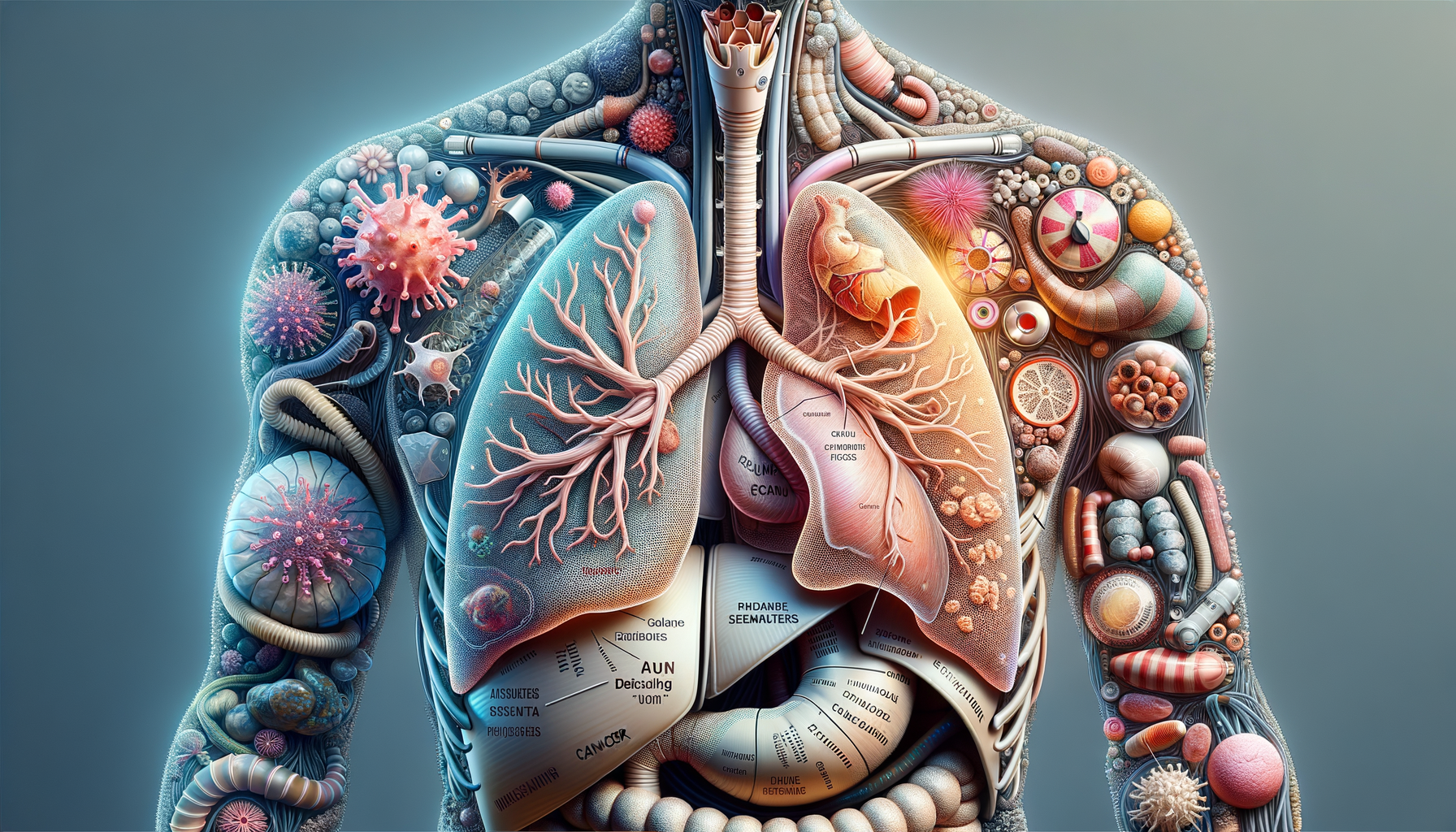Understanding Lung Cancer Symptoms
Lung cancer, a formidable adversary in the realm of health, often begins its journey silently. The symptoms of lung cancer can vary significantly depending on the type and stage of cancer. Common symptoms include a persistent cough, chest pain, and shortness of breath. These symptoms might easily be mistaken for other respiratory illnesses, which is why they often go unnoticed until the disease has advanced.
In more advanced stages, symptoms might escalate to include coughing up blood, unexplained weight loss, and a hoarse voice. Such symptoms should raise red flags, prompting immediate medical consultation. Additionally, recurrent respiratory infections such as bronchitis or pneumonia can also be indicative of lung cancer. It is crucial to understand that symptoms can differ between individuals, making awareness and early detection vital.
In summary, while some symptoms may seem benign, their persistence or combination with other unusual signs should not be ignored. Early recognition of these symptoms can significantly improve the prognosis and lead to more effective treatment.
Early Warning Signs of Lung Cancer
Early detection of lung cancer can be life-saving. Recognizing early warning signs is key to catching the disease before it progresses. Some subtle signs include a chronic cough that doesn’t go away, changes in a chronic cough, and coughing up small amounts of blood. These signs, although potentially indicative of other conditions, warrant further investigation.
Another early warning sign is persistent chest pain, which may be felt deep within the lungs or in the chest wall. This pain can be sharp or dull and may worsen with deep breathing, coughing, or laughing. Additionally, unexplained fatigue and a noticeable decrease in energy levels can be early indicators of lung cancer.
It’s important to pay attention to these early warning signs, as they can often be the body’s way of signaling an underlying issue. Consulting a healthcare provider for a thorough evaluation can help in early diagnosis and treatment, potentially improving outcomes.
Lung Cancer Detection Methods
Detecting lung cancer at an early stage can significantly improve treatment outcomes. Various methods are employed to diagnose lung cancer, ranging from imaging tests to biopsies. A chest X-ray is often the first step in detecting abnormalities in the lungs. However, it might not be sufficient for a conclusive diagnosis.
Advanced imaging tests like CT scans provide more detailed information and can reveal smaller lesions that might not be visible on an X-ray. PET scans are also used to detect cancerous cells by highlighting areas of high metabolic activity. Additionally, MRI scans can be employed to assess the spread of cancer to other parts of the body.
In cases where imaging tests suggest lung cancer, a biopsy is often performed to confirm the diagnosis. This involves obtaining a tissue sample from the lung, which is then analyzed for cancer cells. Bronchoscopy, needle biopsy, and thoracentesis are some of the techniques used to obtain lung tissue samples.
Overall, a combination of these detection methods provides a comprehensive assessment, allowing for accurate diagnosis and timely intervention.
Importance of Regular Health Check-ups
Regular health check-ups play a critical role in the early detection of lung cancer. They provide an opportunity for healthcare professionals to screen for potential signs of lung cancer, especially in individuals at higher risk, such as smokers or those with a family history of the disease.
Screening programs, like low-dose CT scans, are recommended for individuals at high risk and have been shown to reduce lung cancer mortality by detecting the disease at an earlier, more treatable stage. These screenings can catch lung cancer before symptoms appear, providing a better chance for successful treatment.
Moreover, regular check-ups allow for the monitoring of any changes in health status, enabling prompt investigation of any suspicious symptoms. This proactive approach can lead to early intervention, improving overall health outcomes and quality of life.
Conclusion: Stay Informed and Vigilant
Understanding the symptoms and early warning signs of lung cancer is crucial for early detection and treatment. While the symptoms can be subtle and easily overlooked, awareness and vigilance can lead to timely medical attention and improved outcomes. Regular health check-ups and screenings are vital components of a proactive approach to health, particularly for those at increased risk.
By staying informed and attentive to changes in your health, you can take charge of your well-being. If you or someone you know is experiencing any symptoms associated with lung cancer, seeking medical advice promptly is essential. Remember, early detection is a powerful tool in the fight against lung cancer.




Leave a Reply